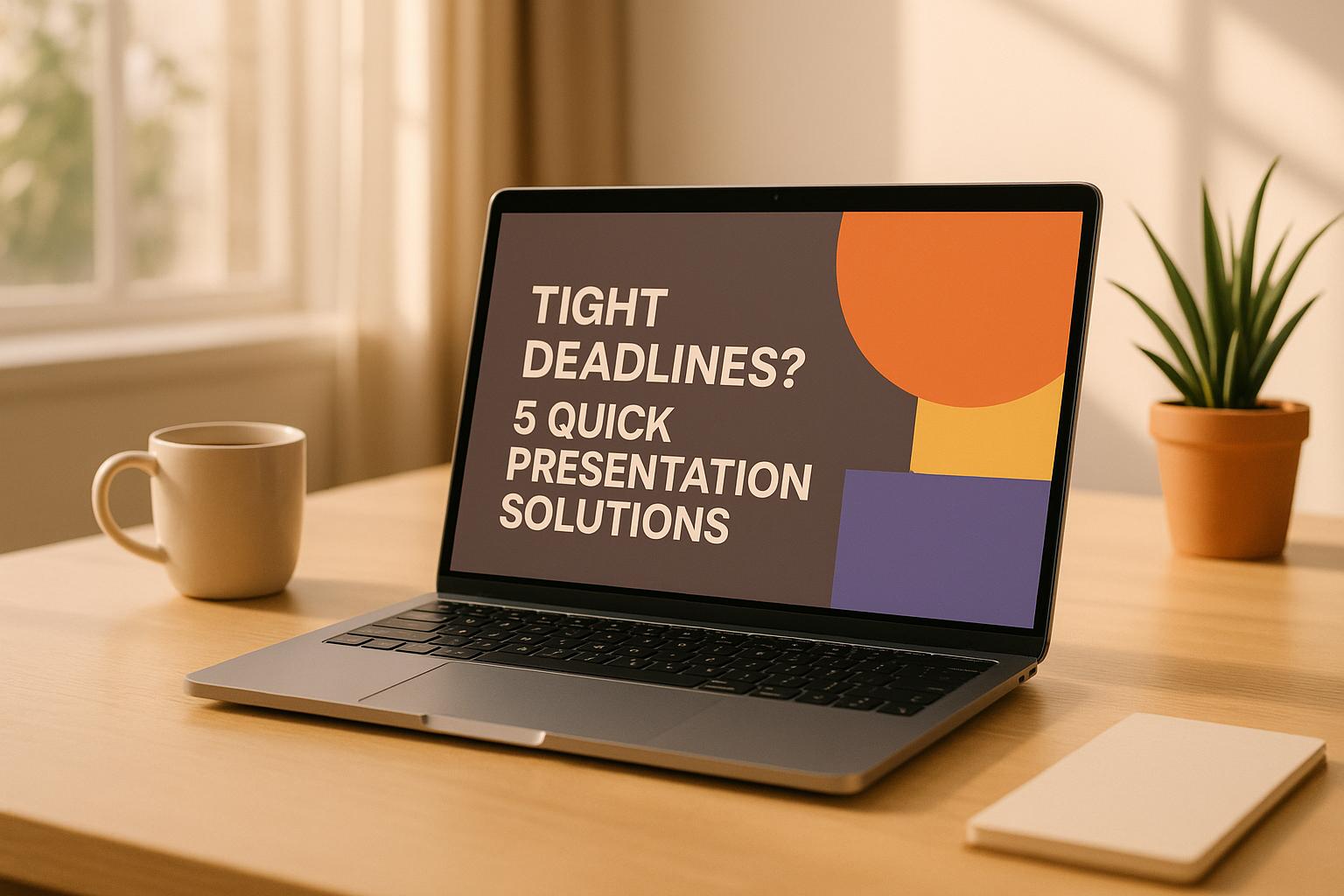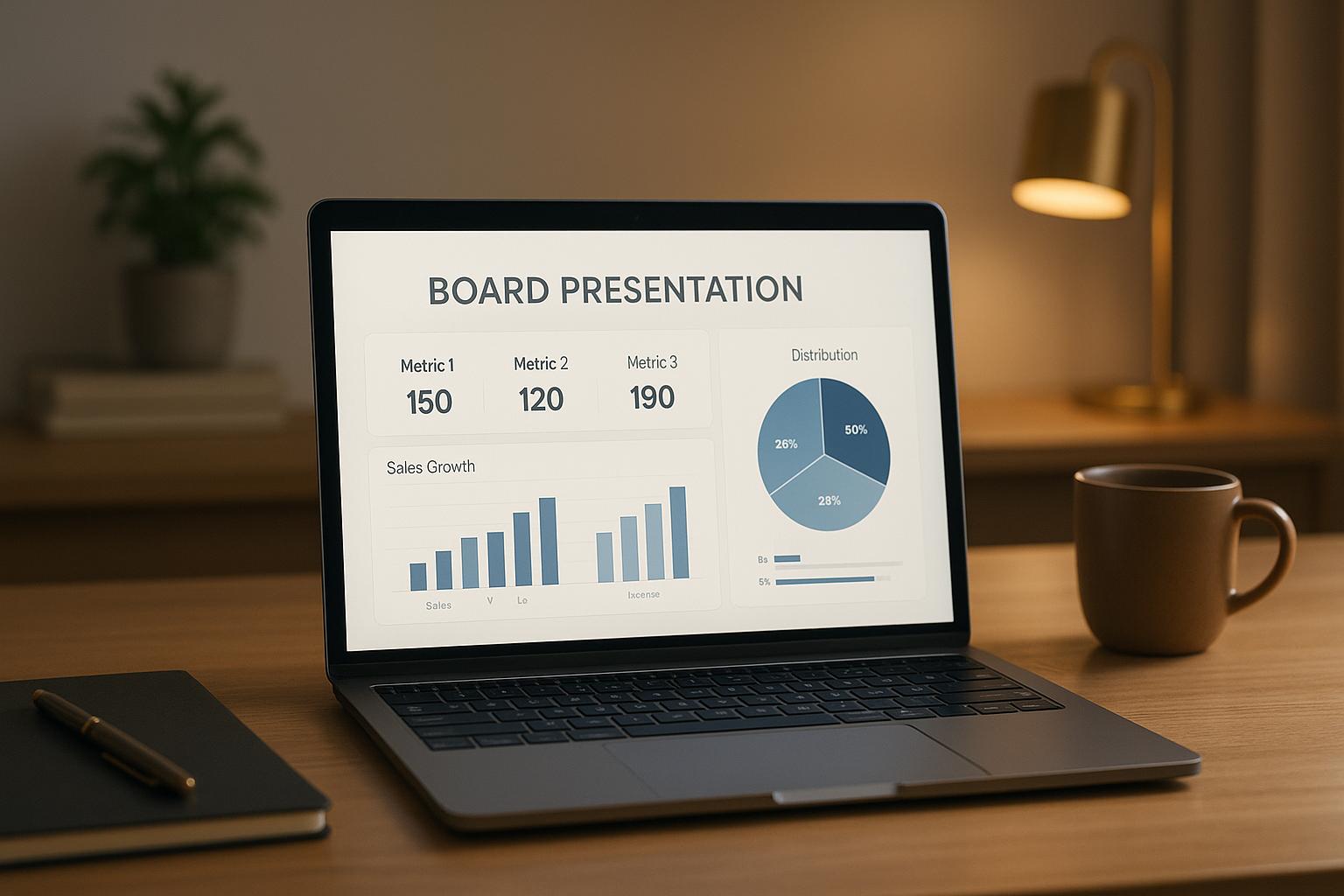In today’s fast-paced business environment, creating an impactful strategic presentation can feel like assembling a complicated puzzle—moving from raw inputs to structured frameworks, into a written brief, and finally into polished slides. That process can take days, if not weeks.
AI strategy tools compress that workflow. In minutes, they can generate frameworks (e.g., SWOT, Porter’s Five Forces), synthesize them into a concise brief, and export a design-consistent deck—so teams spend more time on decisions and less on formatting.
The problem with traditional strategy creation
For years, the playbook has been: gather information, sketch frameworks, write the brief, then build the deck. In practice, it’s often:
- Disjointed — frameworks, research, and slides are created separately, causing inconsistencies and redo work.
- Time-consuming — by the time slides are finished, market realities may have shifted.
- Overly manual — highly skilled people spend hours formatting instead of refining insights.
The result: a process that’s slow, fragile, and ready for AI-powered improvement.
Step 1: Generate strategy frameworks with AI
Instead of starting from blank templates, you provide context (company, market, goals, constraints). The AI builds first-pass frameworks you can review and refine:
- SWOT Analysis — clarifies your current position by mapping strengths and gaps to market openings and risks, so you can set near-term priorities.
- Porter’s Five Forces — evaluates industry power dynamics to reveal where profit pools are and how to build a defensible position.
- Blue Ocean Strategy — helps you spot unmet demand and design offerings that sidestep head-to-head competition by redefining customer value.
Together, these act as strategic scaffolding: defining where you are, where you could be, and how to get there.
Step 2: Turn frameworks into a strategy brief
This is where structure becomes a plan. The AI digests inputs, connects insights across frameworks, layers in relevant analysis, and produces a brief that:
- Summarizes the current state of play
- Connects the dots across frameworks and research
- Recommends a clear direction forward with trade-offs
- Establishes a narrative you can defend with stakeholders
You move from theory to an actionable point of view.
Step 3: Convert the brief into a boardroom-ready deck
With the strategy locked, AI turns the brief into slides—automatically formatted and design-consistent—so you can focus on the message, not the margins.
- Design consistency — fonts, spacing, and hierarchy are aligned.
- Narrative flow — slides follow the logic of the brief: context → analysis → recommendations → next steps.
- Time savings — what used to take hours of copy-paste happens in minutes.
Why AI strategy tools are winning
- Speed + consistency — faster cycles without sacrificing clarity.
- Scalability — apply a repeatable process across many projects.
- Quality of thought — structured prompts nudge better questions and sharper decisions.
- Security expectations — for sensitive work, prefer tools aligned with SOC 2 and ISO 27001 practices.
- Competitive edge — faster, clearer strategy work builds credibility with clients and stakeholders.
Bottom line: AI isn’t replacing strategists—it’s supercharging them.
Get Boardroom-Ready Slides Today
If you want this end-to-end flow—frameworks → brief → slides—in one place, StratEngine AI delivers it in a single, streamlined pipeline. Try it when you’re ready to turn messy inputs into a boardroom-ready narrative in minutes.


